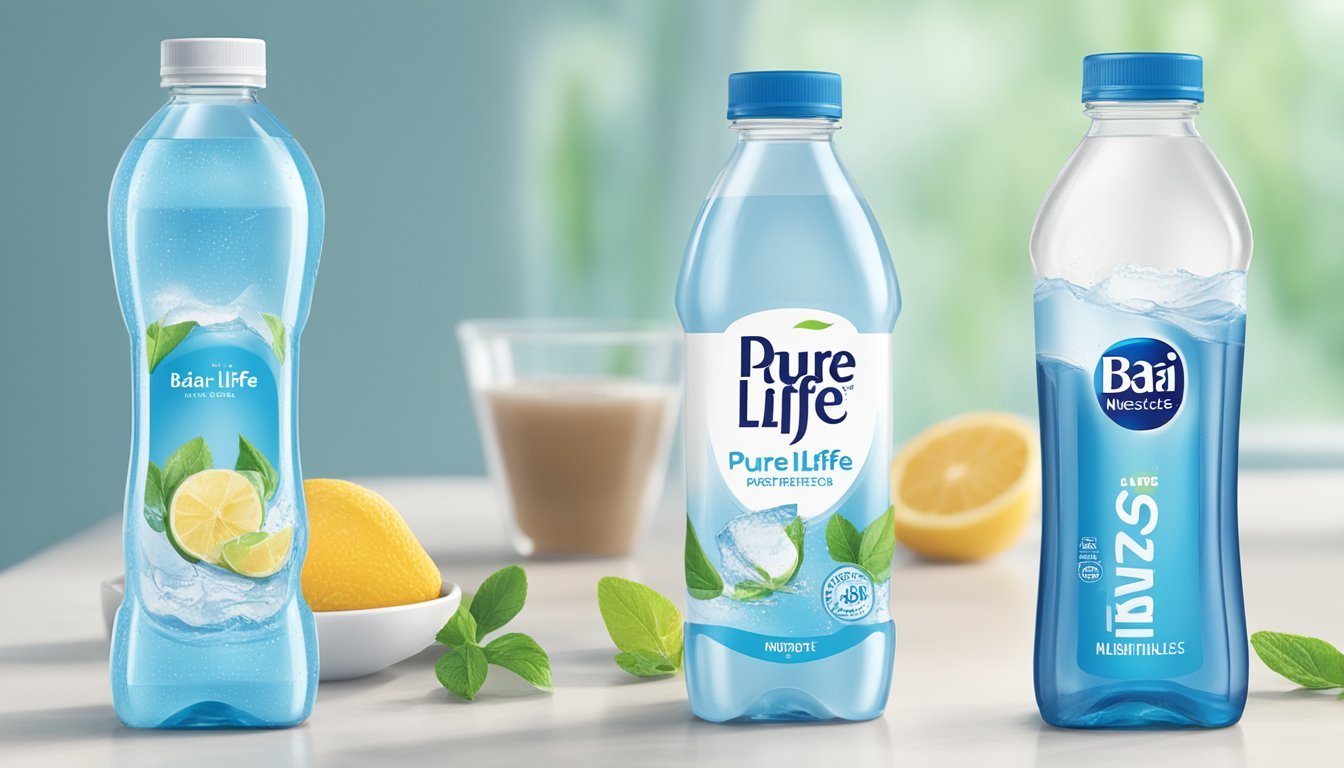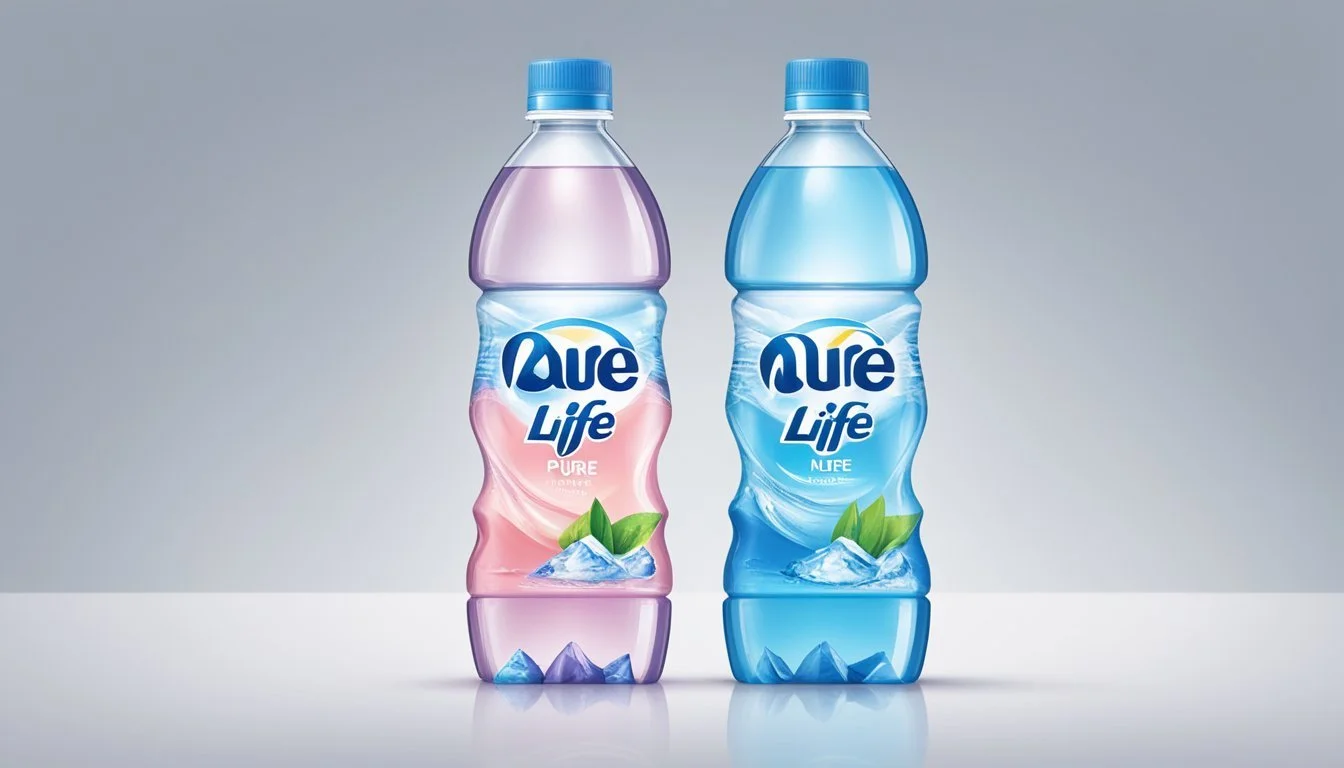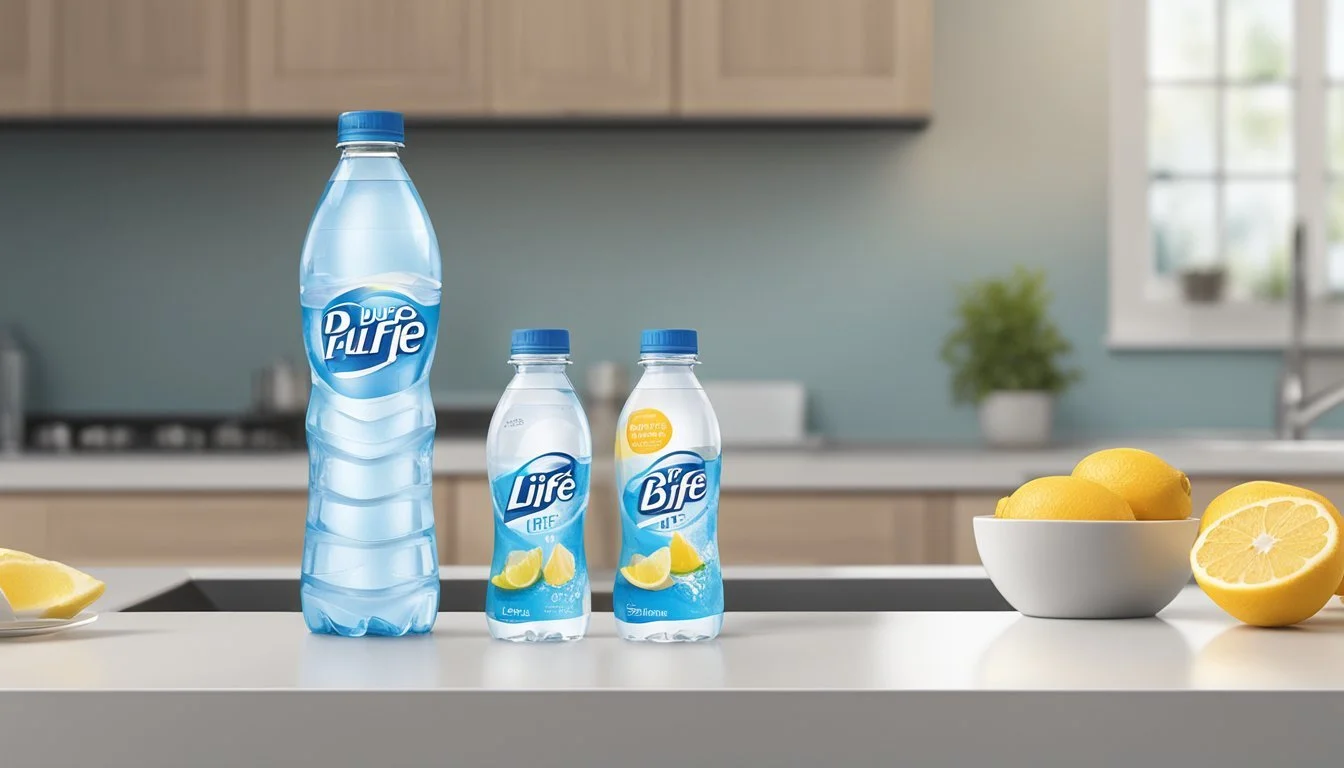Bai vs. Nestlé Pure Life
A Comparative Analysis of Bottled Water Quality
In the realm of bottled water, two notable brands frequently surface in consumer discussions: Bai and Nestlé Pure Life. Bai, known for its antioxidant infusions and flavored water options, targets a segment of the market looking for more than just hydration. Each Bai beverage is infused with flavors that are marketed as both enticing and low in calories, aiming to cater to health-conscious individuals. On the other hand, Nestlé Pure Life is a staple in the bottled water industry, providing purified water to millions around the world.
While Bai offers a unique combination of vitamins, electrolytes, and a touch of sweetness derived from natural sources, Nestlé Pure Life emphasizes simplicity and purity. The latter brand boasts a straightforward product, free from calories and sweeteners, and focuses on delivering water that is accessible and reliable. The decision between Bai and Nestlé Pure Life often boils down to a consumer's personal preference for taste and their health and hydration needs.
Evaluating the two brands requires understanding each brand's source and the water purification processes involved. Bai's waters are supplemented with antioxidants from coffee fruit and vitamin C, which cater to a niche that Nestlé Pure Life does not attempt to fill with its purified water offerings. Contrastingly, Nestlé Pure Life's commitment to providing a healthy hydration option is reflected in its rigorous quality assurance and purification methods designed to ensure a clean and neutral tasting water. Each brand's unique selling propositions have carved out their own spaces within the bottled water market, appealing to different consumer priorities.
Comparative Analysis of Bai and Nestlé Pure Life
In this section, the water brands Bai and Nestlé Pure Life are examined to understand their source, filtration processes, and taste profile. These factors are key in determining which bottled water may better suit consumer preferences and hydration needs.
Brand Overview
Bai claims to offer more than just hydration, marketing their antioxidant infusion drinks that combine water with fruit flavors, electrolytes, and sweeteners. The brand emphasizes a health-conscious image by including antioxidants and positioning itself as a low-calorie beverage option.
Nestlé Pure Life, on the other hand, is well-established in the bottled water market. Focused primarily on providing pure water, it is a product of one of the largest food and beverage companies globally. It has faced scrutiny over its sourcing practices but continues to be a major player in the industry.
Source and Filtration Processes
Bai sources water for its beverages, and further enhances it with added electrolytes for taste. It is not explicitly branded as a mineral water, and as such, its focus is on the flavored beverage market rather than pure water.
Nestlé Pure Life's water is sourced from well-protected underground sources or public water supplies, going through a rigorous filtration process. The brand utilizes a multi-step purification system which includes reverse osmosis and other filtering methods designed to remove contaminants and heavy metals. After purification, a specific amount of minerals is added back to the water to improve its taste and maintain a consistent flavor profile.
Taste Profile
The taste of Bai beverages is characterized by its fruit infusion, offering a variety of flavors, which include artificial and natural ingredients to cater to those looking for a sweeter alternative to plain water. The added electrolytes aim to enhance not only the taste but also the hydration benefits.
In contrast, Nestlé Pure Life provides a more neutral taste due to its thorough filtration and the controlled reintroduction of minerals. Nestlé Pure Life's taste is designed to appeal to those seeking the taste of pure water without additional flavorings while ensuring the essential benefit of hydration.
Health and Nutritional Aspects
When choosing between Bai and Nestlé Pure Life bottled waters, one should consider mineral content, safety standards, and hydration effectiveness as key facets determining healthfulness and nutritional value.
Mineral Content Comparison
Bai Water
Calcium: Not a significant source.
Magnesium: Not a significant source.
Electrolytes: Bai Water does include added electrolytes for taste.
Nestlé Pure Life
Calcium: Present in low quantities; varies by source.
Magnesium: Contains magnesium, but levels are low.
Electrolytes: Some versions are enhanced with additional electrolytes.
Bottled water brands often enhance their products with minerals for added health benefits. Bai, although not significantly known for mineral content, includes electrolytes, which are essential for regulating nerve and muscle function. Nestlé Pure Life has varying levels of minerals depending on the source and may also be enhanced with electrolytes.
Safety Standards
Both Bai and Nestlé Pure Life are subjected to rigorous safety standards to ensure the absence of harmful levels of heavy metals such as:
Lead
Arsenic
Mercury
Additionally, these water brands are required to test for synthetic chemicals like PFAS, ensuring their products meet or exceed government and industry safety guidelines.
Hydration Effectiveness
While both Bai Water and Nestlé Pure Life aid in hydration, the presence of electrolytes can improve the body's hydration efficiency. Bai Water's added electrolytes may slightly edge its capacity for hydration over Nestlé Pure Life's basic formula. However, the overall health benefit should not be dramatically different as both primarily provide the hydration necessary for health.
Environmental and Manufacturing Considerations
When assessing Bai vs. Nestlé Pure Life bottled waters, one must consider the environmental impact of their packaging and the conservation methods involved in their water sourcing.
Packaging and Sustainability
Bai
Packaging Material: Bai beverages are typically packaged in PET bottles, which are recyclable. However, concerns have been raised about the presence of BPA in PET plastics.
Environmental Initiatives: Bai emphasizes sustainable packaging practices and actively seeks to reduce its environmental footprint.
Nestlé Pure Life
Packaging Material: Nestlé Pure Life utilizes a variety of packaging materials, including some that have been criticized for their environmental impact. Nonetheless, efforts have been made to incorporate recycled materials where possible.
Environmental Initiatives: Nestlé has pledged to make 100% of its packaging recyclable or reusable by 2025 and is exploring alternative packaging solutions to minimize waste.
Water Source Conservation
Bai
Water Sources: Bai products use a combination of groundwater and natural water sources, including mountain spring water. Bai aims to ensure the long-term sustainability of its water sources through responsible sourcing practices.
Conservation Efforts: Bai's manufacturing processes include measures to protect water resources and to minimize water waste.
Nestlé Pure Life
Water Sources: Nestlé Pure Life primarily sources its water from carefully monitored groundwater sources. There are ongoing debates regarding the impact of these bottling activities on local water supplies.
Conservation Efforts: Nestlé has initiated various water stewardship programs and commits to water-positive practices by improving water efficiency and reducing wastage. They are also working towards AWS certification for all their water sites by 2025.
Consumer Preferences and Trends
In the current market, consumers' preferences for bottled water brands such as Bai and Nestlé Pure Life are shaped by distinct market trends and the convenience each brand offers.
Market Trends in Bottled Water
The bottled water industry witnesses evolving trends as consumers increasingly prioritize health, taste, and sustainability. Popular brands are often distinguished by their source and filtration process, with some consumers favoring artesian and spring waters for their perceived purity. Brands like Bai, which offer antioxidant infusion, appeal to the health-conscious segment seeking added benefits. Conversely, Nestlé Pure Life is recognized for its widespread availability and often competes on price and accessibility, aligning with the market trend of consumers seeking value in their purchases.
Health-Awareness: Consumers are choosing brands that offer additional health benefits or claim to use better filtration methods.
Eco-Friendly Packaging: Environmentally friendly packaging can influence consumer preference, especially as awareness around plastic waste increases.
Flavored and Enhanced Water: There is a rising demand for bottled water with added flavors or health supplements without added sugar or calories.
Convenience and Accessibility
Convenience remains a driving force for consumer preferences in bottled water. Consumers often select a brand based on its availability in their daily routine whether at grocery stores, vending machines, or convenience stores. Bai, with its targeted presence in health food sections and specialty stores, may appeal to the niche market, while Nestlé Pure Life dominates in terms of broad accessibility. The latter's effective distribution network ensures its presence across various retail points, making it a go-to choice for consumers prioritizing convenience.
Retail Availability: Easy to find across different stores, Nestlé Pure Life has a competitive edge in availability.
Portability: Consumers prefer bottles that are easy to carry and have a secure closure to prevent spills, which both brands provide.
Multi-Pack Options: Offering multi-pack sizes caters to consumers looking for value, a strategy often used by Nestlé Pure Life.
Regulatory and Ethical Practices
When comparing Bai and Nestlé Pure Life's approach to regulatory and ethical practices in their production and distribution of bottled water, several factors are worth examining.
Nestlé Pure Life has faced scrutiny over its extraction methods and impact on local water resources. Nestlé's commitment to abide by regulations and ethical standards has been questioned in several instances, particularly in the context of the public's access to water. Despite adhering to legal frameworks, the brand has encountered challenges from communities and advocacy groups concerned about the potential depletion and privatization of public water supplies.
On the other hand, Bai has not been as prominent in the public discourse regarding water sourcing. As a smaller entity compared to Nestlé, information on Bai's water sourcing practices and ethical considerations is not widely scrutinized in the public domain.
The International Bottled Water Association (IBWA) provides guidance and a framework for regulatory compliance among its members, calling for responsible stewardship of water resources and adherence to safety standards. Both companies are expected to comply with these industry standards, which include:
Sourcing: Ensuring the sustainability and legality of water sources.
Labeling: Providing accurate product information.
Quality: Meeting prescribed safety and quality benchmarks.
Consumers are becoming increasingly aware and concerned about the ethical implications of their bottled water choices. They may weigh factors such as:
Sustainability efforts
Impact on local communities
Regulatory compliance
Both Bai and Nestlé Pure Life must navigate these consumer expectations and the regulatory landscape, which includes both national and international laws, such as those pertaining to resource management and consumer protection.
Bottled Water Brands Comparison
When selecting bottled water, consumers often weigh taste, purity, source, and brand reputation. This section specifically examines a range of popular bottled waters to discern their distinctive features.
Comparing Different Water Brands
Dasani:
Source: Municipal sources
Process: Reverse osmosis, minerals added for taste
Aquafina:
Source: Public water sources
Process: Hydro-7 purification system
Fiji Water:
Source: Artisan aquifer in Viti Levu, Fiji
Process: Natural filtration, untouched by human hands
Voss:
Source: Aquifer in Southern Norway
Process: Protected from pollutants, minimalist processing
Smartwater:
Source: Varies, often municipal
Process: Vapor distillation, electrolytes added for taste
Essentia:
Source: Various; municipal and natural sources
Process: Ion-exchange treatment and microfiltration, alkaline with a pH of 9.5
Core Hydration:
Source: Deep underground aquifers
Process: Ultra-purified, balanced with electrolytes and minerals
Perrier:
Source: Spring in Vergèze, France
Process: Naturally carbonated by the source
Penta:
Source: Undisclosed United States aquifer
Process: 13-step purification process, including UV and ozone treatment
Each brand offers a unique proposition in terms of source and purification process. Some, like Perrier, offer a naturally carbonated option, whereas brands such as Essentia and Core Hydration focus on electrolyte-enhanced options for added hydration. The choice often comes down to personal preference for taste and purity, and the purpose—whether it’s daily hydration or pairing with a meal.
Final Recommendations and Insights
When comparing Bai and Nestlé Pure Life, consumers are faced with two contrasting profiles of bottled water. Bai waters offer a range of infused beverages, focusing on antioxidant-infused drinks that provide a combination of hydration and flavor, whereas Nestlé Pure Life is a more conventional bottled water, widely distributed and known for its consistent quality.
Nestlé Pure Life often ranks as an average choice among bottled waters. It is neither at the top nor the bottom when assessing quality or taste among its competitors. It serves the purpose for basic hydration needs without any significant added benefits, unlike specialty waters with enhancements or sourced from unique locales.
Bai, on the other hand, provides a different experience, one that caters to those looking for a tasteful beverage that also offers the benefits of antioxidants. Its unique selling point isn't about the source of the water but the added value through infusions.
In terms of selecting the best bottled water between the two, the choice largely depends on consumer preferences: plain hydration versus functional beverages. However, here are some specific considerations for a buyer:
Choose Nestlé Pure Life for a straightforward, no-frills water.
Opt for Bai if flavor and added antioxidants are a priority.
Criteria Nestlé Pure Life Bai Bottled Water Flavor Profile Plain Infused & Flavorful Added Nutritional Value None Antioxidants Purpose Basic Hydration Enhanced Hydration
The bottom line in selecting between Bai and Nestlé Pure Life bottled waters: consider whether you value enhancements like flavor and antioxidants, or if you prefer traditional plain water. Each caters to different hydration philosophies, but both serve to satisfy thirst and meet consumer hydration needs.





